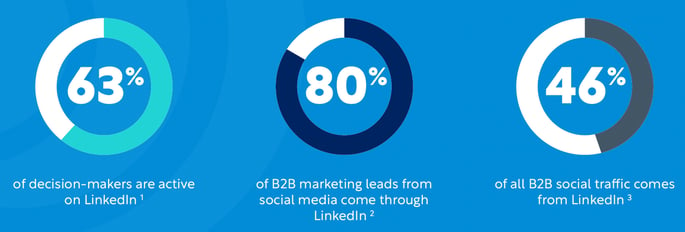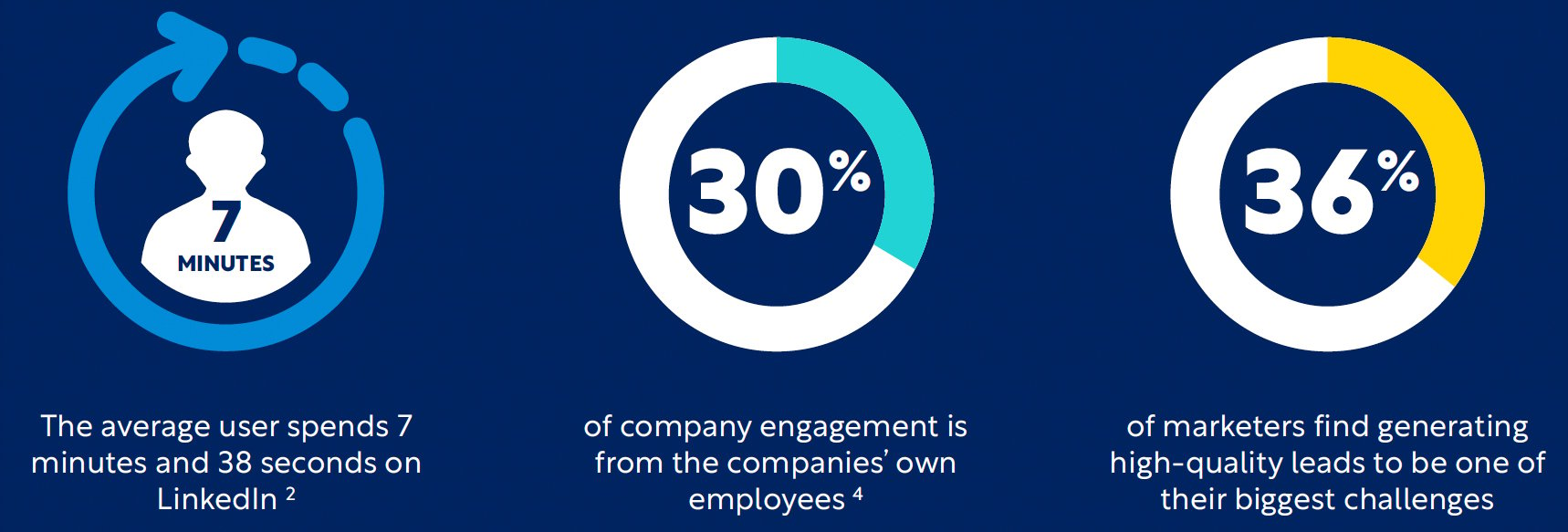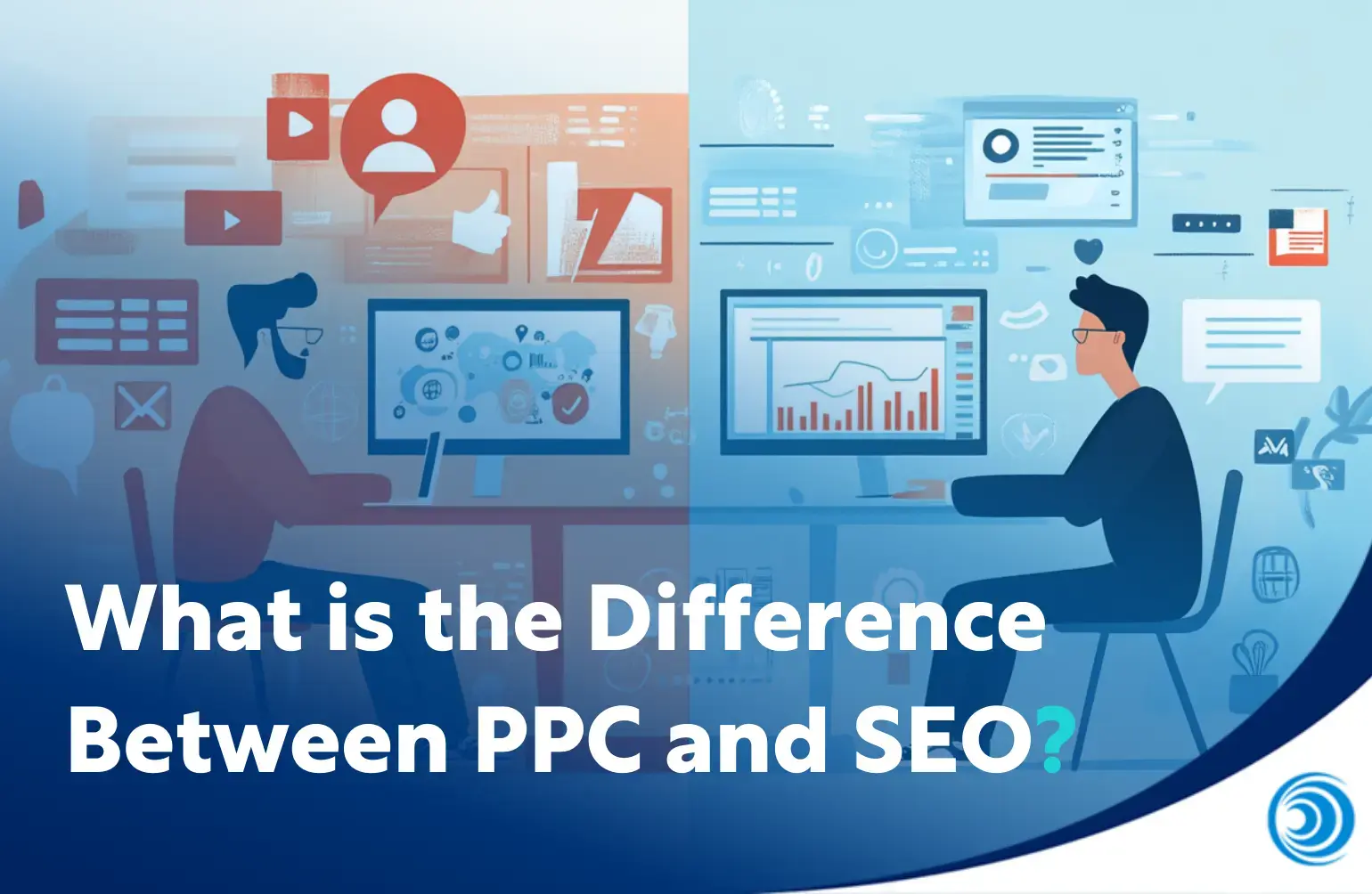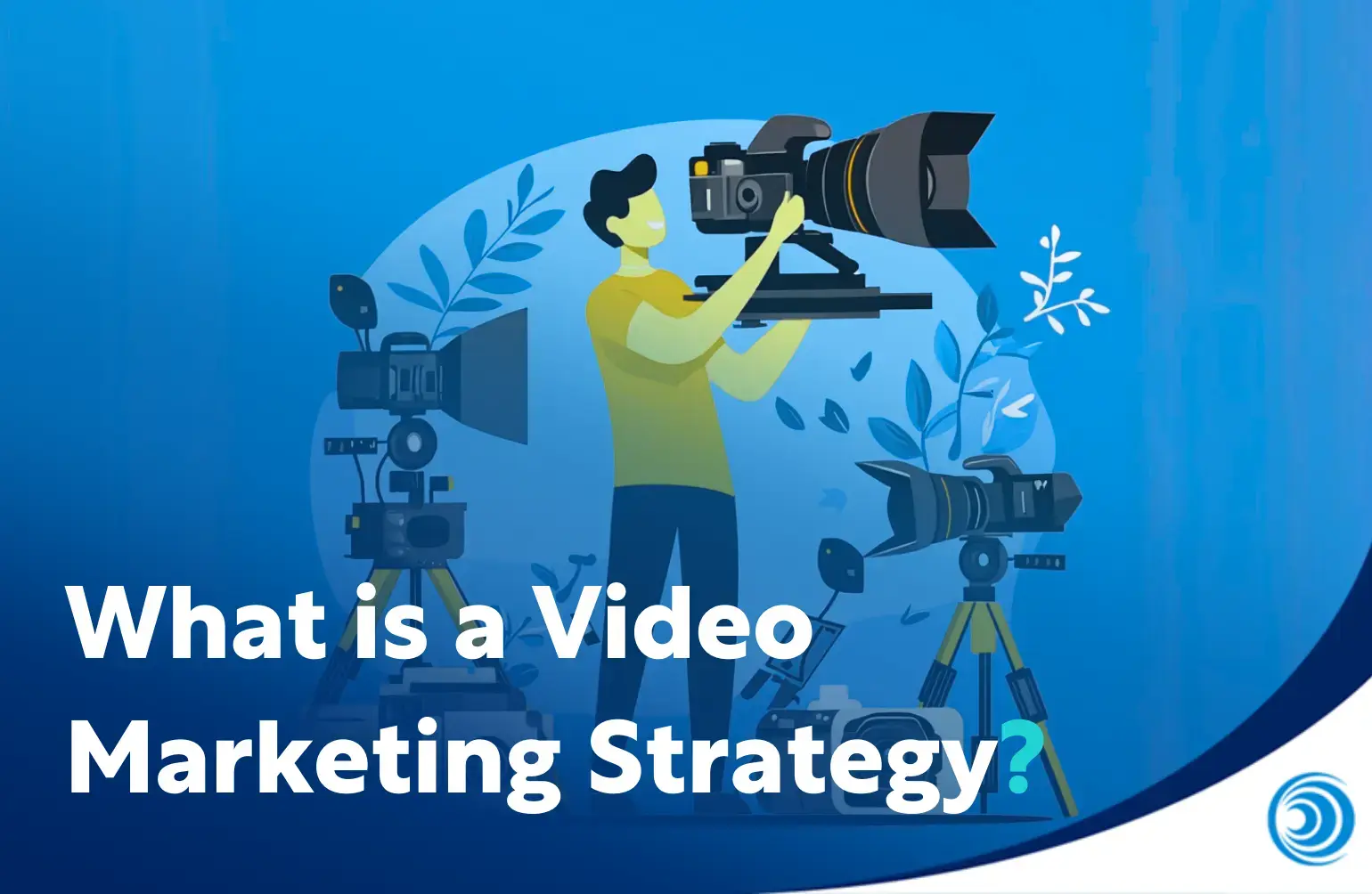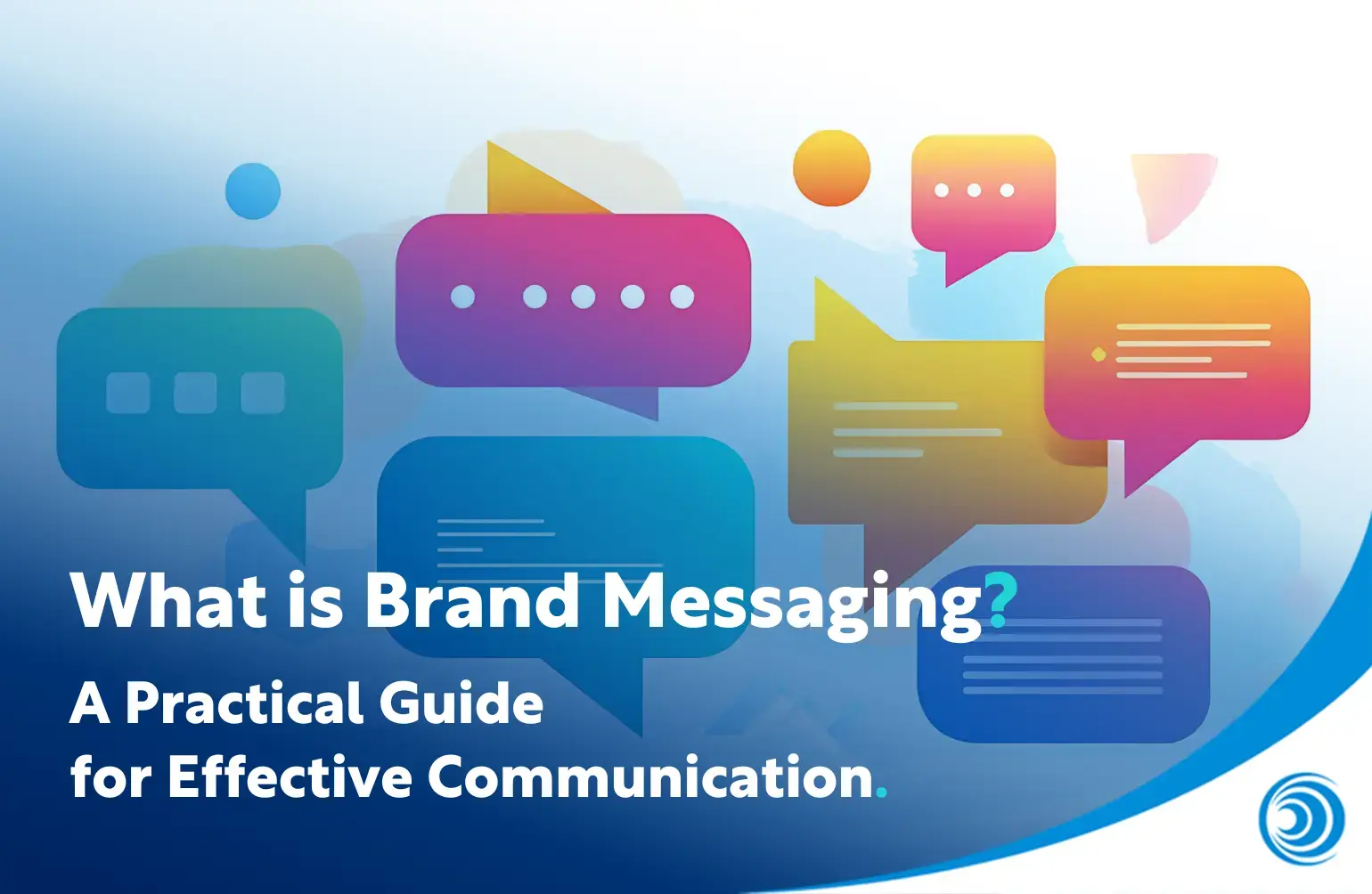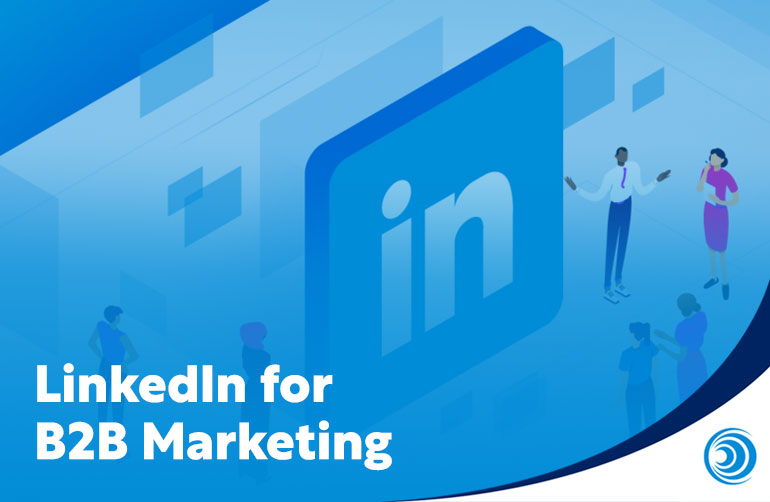
LinkedIn for B2B Marketing
LinkedIn is the number one social media platform for business-to-business (B2B) marketing, with over 80% of B2B leads coming from LinkedIn alone.
Incorporating LinkedIn marketing solutions into your paid social media strategy can help accelerate the process of finding new prospects and customers for your sales team.
So why should your fintech adopt a B2B marketing strategy through LinkedIn?
What is LinkedIn for B2B marketing?
As the largest online professional network, LinkedIn is one of the perfect social platforms for B2B fintech marketers to target potential customers.
Reaching decision-makers is key to B2B marketing, and LinkedIn has become the essential social media tool for driving leads for the sales funnel.
With this in mind, it’s no surprise that LinkedIn has become the most trusted social media platform for marketers.
The importance of LinkedIn for B2B businesses
With over 750 million members, LinkedIn is a global community of professionals, 63% of them being key decision-makers.
The primary purpose of LinkedIn users is to expand their business networks and find potential clients.
Through LinkedIn marketing, your fintech can directly access the right people, in the right companies.
A B2B LinkedIn marketing strategy that is SMART (Specific, Measurable, Actionable, Relevant, and Timely) can benefit your fintech. It will focus your business to gain leads and build meaningful connections with your target audience.
How to use LinkedIn for B2B marketing
Whether your fintech already has a LinkedIn profile or is learning the ropes, it’s important that you have a LinkedIn marketing strategy.
Complete the following steps to maximise your marketing efforts.
1. Optimise your company page
Make a LinkedIn company page for your fintech business.
This will be the first thing potential customers will see when they find your brand on LinkedIn. It is important that you optimise your company's LinkedIn page.
Fill out the entire company page, including your company name, description, profile picture, and links to your website.
As part of your LinkedIn strategy, your company page should:
-
Have a concise summary line, describing what exactly your company does. Make sure you include relevant keywords (yes, LinkedIn SEO is a thing!) so the average LinkedIn user can find you with ease
-
Conjure up a compelling about us section, detailing your fintech’s purpose, products and/or services unique value proposition (USPs), values, and mission
-
As much as we hate to admit it, people do judge a book by its cover! Use a well-designed hero image and profile picture. They need to be consistent with your branding, to make your account look professional
2. Define your audience & goals
Your social media strategy should tailor to all the social media platforms you are on. LinkedIn is no exception.
First, decide your objectives. Are you using the channel for lead generation? Or to increase brand awareness?
Then, you’ll want to define your fintech’s target audiences based on their personas.
Understanding what you’re working towards and who you’re trying to target will make it easier for your marketing team to determine everything from what content marketing material to share and which calls-to-action to use in your LinkedIn posts.
3. Create a showcase page
If your fintech offers many products and services, you may want to include showcase pages.
A LinkedIn showcase page is an extension of your business page. They are designed to highlight one area of your business and promote it.
They help maintain your unique tone of voice and brand personality, whilst promoting your USPs.
Include a call to action on each page, such as "learn more" or "visit the website". Including a link to a landing page will generate leads to your site and increase website visitors.
4. Create & join groups
LinkedIn has some community features. Groups provide a place for professionals with similar interests to share their insights and experiences. They can ask for guidance, and build connections with other users on the social network.
Joining, or creating, groups can benefit your business in several ways:
-
Boost your content’s engagement – Whether it be video content or an infographic, share it with the group. Members are more likely to engage with niche and relevant content, as they’ll receive notifications on new posts within the group.
-
Demonstrate thought leadership – Contributing regularly to groups will help solidify your expertise in the fintech industry. Sharing your knowledge or advice will help members see you as a credible source. If your peers see you as a thought leader, chances are your target audience will too.
-
Lead generation – After joining a group, we’d recommend making a list of target clients. You can do this by using the search function and filter features. This will also help create a list of potential clients, which you can message using LinkedIn's private messaging system.
-
Gather feedback – Groups provide a great opportunity to gain feedback on your business. You get a chance to identify new ways to improve your products and services. Good business practice is to seek honest feedback and advice from active users.
By including the above in your LinkedIn strategy, you can help increase awareness of your company profile and gain more leads.
5. Publish valuable content
Sharing quality content is one of the most effective ways for companies to differentiate themselves and boost sales.
89% of key decision-makers have a more positive perception of organisations if they share high-quality thought leadership content – this could be a blog post, industry news, reports, and more.
You can leverage LinkedIn marketing to voice your opinions and position yourself as a thought leader within the industry. Using market research and case studies is a great way to back up your ideas.
It’s imperative to note that quality is more important than quantity.
Create valuable content and present it to the right people by using relevant keywords and hashtags in your social media posts. This will help you appear in users' feeds and increase page visitors.
Using LinkedIn ads to reach your B2B audience
One of the significant benefits of LinkedIn is access to targeted ads. LinkedIn splits targeting into two main sections. They are "audiences" and "audience attributes".
For audience targeting, you can retarget or reach known contacts.
On the other hand, "audience attributes" allows you to reach users by industry, job titles, job seniority and even interests and traits. This allows us to target relevant audiences to improve ad performance.
The flexibility with targeting options allows you to experiment with various audience attributes. Furthermore, with detailed targeting options comes detailed demographic reports.
You can view activity by job function, job title, company, industry, seniority, company size and location.
This gives you a better idea of who is engaging with your ads and who isn't. You can then make optimisations and tweaks based on proven data.
Let's take a step back. It is important to know your goals and objectives before even setting up a PPC campaign on LinkedIn. One of the first steps in setting up your LinkedIn campaign is choosing your objective.
If your goal is to capture quality leads, you may choose "lead generation" as your campaign objective. I, you may choose "website visits" to drive traffic.
How to improve ROI on your LinkedIn ads
The ideal scenario for marketers is reducing campaign costs while increasing ad engagement and conversions.
1. Reducing ad costs
Depending on your campaign's objective, you may want to reduce your cost-per-click (CPC) and/or cost-per-lead (CPL).
Usually, a high CPC suggests that you are paying more for fewer clicks. In other words, you may not be getting the most from your ad campaign.
The actual cost per click for your ad will be dependent on many factors. These include your budget, audience, audience country, ad format, and campaign objective.
To reduce your ad costs and increase ad performance, it is important that your ads are relevant. LinkedIn will reward relevant ads that have shown positive engagement.
If your ads perform poorly, you might need to refine your ad content or target audience.
2. Consistent A/B testing
A/B testing is the practice of testing variations of an ad to see which performs better. The intention is to strategically improve ads with data.
Good advertisers may consistently A/B test to improve their marketing. Frequent tests will only speed up the process of finding winning ads. With more winning ads, you have more data and a formula for future ads.
Some ad elements that you can test include creatives, copy, headlines, CTA, and URLs.
What is LinkedIn Sales Navigator?
Sales Navigator is LinkedIn's premium sales management tool. Sales reps can use this tool to build and manage their customers on a wider scale.
Sales Navigator offers better search capabilities and improved network visibility. This helps with finding valuable lead opportunities.
Sales Navigator helps sales teams successfully fulfil the three most key functions in their role. As described by LinkedIn, they are:
-
Targeting - Identifying potential customers of your product and/or service.
-
Understanding - Staying updated on key changes made by target profiles. For instance, signs of buying intent will allow you to react fast to rising opportunities.
-
Engagement - Taking advantage of Linkedin's messaging and content-sharing features to engage with an appropriate business environment.
Overall, LinkedIn's Sales Navigator provides businesses with more lead opportunities through better network visibility.
Whether you have a dedicated sales team or you're looking to reach more leads, Sales Navigator can be an effective part of your LinkedIn B2B marketing strategy.
Conclusion
With LinkedIn being the top platform for B2B marketing, it’s key to ensure that you’re utilising it effectively.
Through a LinkedIn marketing strategy, you can reach your target audience and key decision-makers, who are ready and willing to engage with your fintech business.
To maximise your marketing effort, it is important that you have a complete LinkedIn page, defined goals and audiences, and valuable or thought-provoking content to share. You may even want to consider joining groups and creating showcase pages.
Still confused?
You don’t have to do it alone...
Reach out to a third-party marketing agency. At Blue Train Marketing, we can help you create brand awareness, engage prospects, and help move your prospective customers forward in the buying process through LinkedIn.
We will work with your fintech to fully optimise the potential of your LinkedIn outreach, both paid and organically. Get in touch for a LinkedIn consultation.

